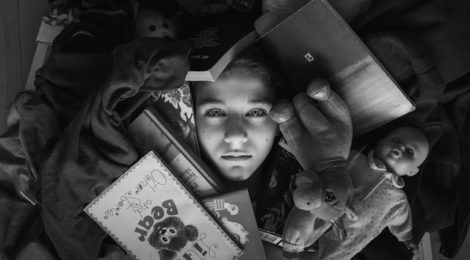
Multigenerational Hoarding an Enormous Stress on Families
Hoarding is often mocked, stigmatized, and used as entertainment in shows like Hoarders, on the Art and Entertainment Network. Previously regarded as a form of Obsessive Compulsive Disorder (OCD), in 2013, hoarding was designated as a separate disorder in the American Psychiatric Association’s DSM-V on hoarding behaviour in western culture found approximately 2 of 100 people met criteria for a Hoarding Disorder (HD) diagnosis.
HD not only impacts the person diagnosed, but it can also affect the family unit. As the person acquires more possessions over time, they place more value on these items. They become reluctant to part with these belongings and develop unhealthy attachments to the possessions. Often hoarding runs in families.

The Trauma and Mental Health Report interviewed Amelia (name changed) on her experience growing up in a hoarding household. She shared that while growing up, her mother would often buy or hold on to an assortment of items they didn’t need or had no use for. She would keep various broken items to be used later in art projects. Any attempt to throw out any items, including those that belonged to Amelia, was met with resistance and anger.
As a result of her upbringing and her now conflicting values, Amelia hates cluttered spaces, but also struggles to throw out items she doesn’t need. “I was taught that everything has value. I was taught that to get rid of things, even when broken or unwanted, was wasting money and irresponsible.” Amelia shared that her mom did not have much of her own when growing up and had to work for everything she now owned as an adult. Her hoarding behaviour increased in severity over time, especially after Amelia left home. “It was like walking into an episode of hoarders.” Interestingly, it was discovered that Amelia’s maternal grandfather and great-grandfather were also hoarders for similar reasons.

Carol A Mathews, a hoarding researcher at University of Florida’s Department of Neuroscience has shown that there is a 36-45% chance of passing hoarding behaviours to one’s children, and there is a 50-80% likelihood that at least one other person in the family experiences hoarding behaviours.
However, Mathews clarifies that these findings do not mean that those with a genetic susceptibility are destined to be hoarders themselves. The development of hoarding habits can be influenced by other factors such as the individual’s upbringing, whether they have awareness of their vulnerability for the behavior, and the prevalence of hoarding within the family. Even the development of hoarding behaviours does not guarantee they will become a hoarder, however it is a good indication of when it is time to seek out help to prevent increasing severity of these behaviours. It is important to recognize the risks and signs of developing HD and to engage in preventative measures.
While current hoarding interventions focus primarily on addressing the problem once it has already started, individuals can take preventative measures themselves. When it comes to treatment for hoarding, psychotherapy, particularly Cognitive Behavioral Therapy, is recommended to address the underlying mental health challenges at play. Individuals can also seek out resources such as decluttering programs and other resources which can provide them with advice and assistance.
-Autumn Bakhsh-Livingston, Contributing Writer



